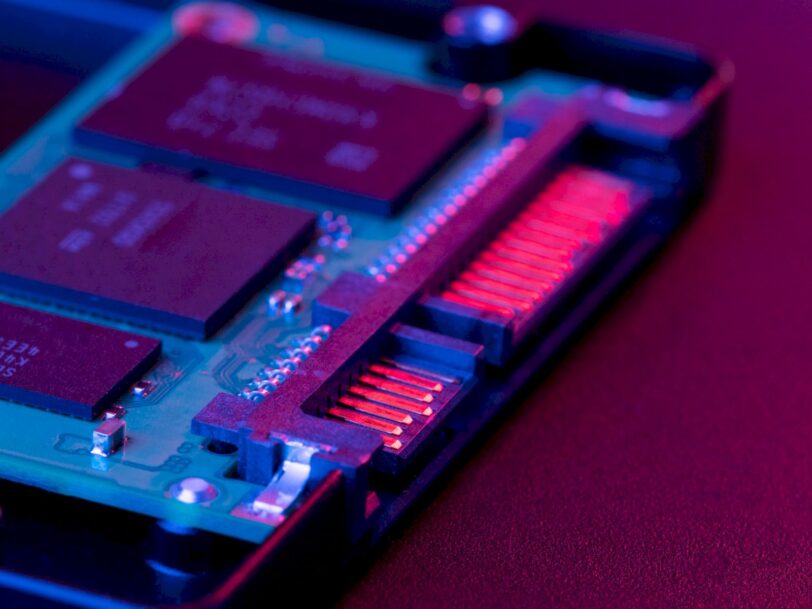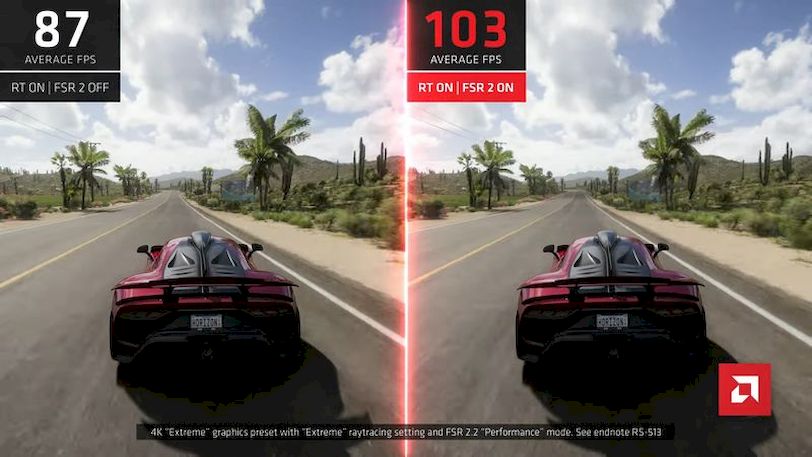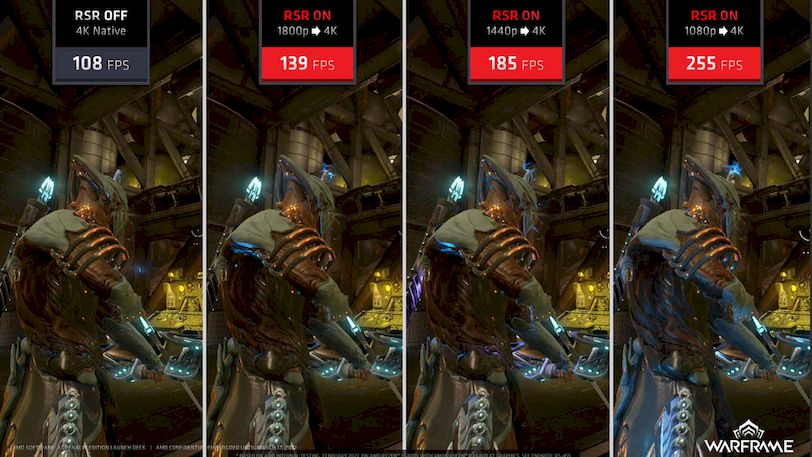What is AMD RSR?

AMD RSR is a somewhat unknown technology for many users. Here we will explain what RSR is, in addition to seeing the real difference with AMD FSR, as well as its direct competitor, such as NVIDIA’s DLSS. This way you will be able to understand what it is about, how they work, what they do, and which is the best for each case.
What is upscaling or image scaling
Before we begin to explain about AMD RSR technology, let’s see what these types of techniques are implemented by GPU designers. And this technique is called upscaling or image scaling. That is, it refers to a change in the scale or size of the image to increase the resolution.

As you should know, the GPU must make a great effort to process the frames that are being sent to the screen in a matter of milliseconds so that the image can be appreciated. This effort can be expensive, depending on the performance of the GPU. And that will end up causing the GPU to slow down when using certain high resolutions, with a significant impact on FPS.
To prevent this from happening, a “trick” can be done whereby the GPU processes the image at a smaller scale, which is lighter in terms of workload, and then by scaling it larger before it is sent to the screen. That’s what all these technologies are about, scaling later to increase the FPS rate.
Also, you may be wondering what image scaling can be used for, and the truth is that it has several applications:
- It is used by some web browsers, image editors, digital zoom, etc., to be able to enlarge thumbnail images to a larger size.
- In the realm of video it can also be used for home theater devices that are HDTV ready from content using PAL resolution. This allows the image to be scaled in real time to fit the screen.
- Certain image scaling algorithms can also be used for scaling in graphics such as pixel art, which tries to simulate low resolution and limited colors, as in retro or vintage video games.
- And, what interests us most, scaling in real time. This real-time scaling is what is achieved in the gaming world to improve the frame rate per second provided by the GPU by making it process an image at a lower resolution than the screen and then scale it with technologies such as DLSS, AMD RSR, FSR, etc. In the case of Intel, the equivalent technique is called Intel XeSS, and it must also be said that NVIDIA also presented a technology similar to what it called NIS (NVIDIA Image Scaler).
What is AMD FSR?

AMD FSR, or Super Resolution FidelityFX, is a software-implemented technology that is compatible with the latest generations of AMD Radeon GPUs. Its developers have created it to fight against NVIDIA’s DLSS. Furthermore, FSR is a more open technology, and could even be used on competing hardware, such as NVIDIA or Intel GPUs, while DLSS is exclusive to GeForce RTX.
Regarding its operation, what FSR does is take information from the last frame of a video game image and creates a higher resolution image by expanding it spatially. This technique isn’t perfect, but it can create higher resolutions without as much of a performance penalty, even if some small details are lost in the process.
That is, AMD FSR serves to generate a higher FPS (Frames Per Second) rate. And it does this by allowing the graphics engine to render at a lower resolution and then through FSR it scales to a higher final resolution. Over time, FSR has been improved, with some versions like FSR 2.0, FSR 2.2, etc. Each of them presenting a better image quality, without so much loss of detail.
What is AMD RSR?
AMD RSR (Radeon Super Resolution) is a technology that sounds similar to FSR, but the truth is that you should not confuse them. That is why I have tried to explain the FSR before, to avoid the typical confusion that usually occurs.
AMD RSR aims to upscale the image using the same spatial scaling algorithm as FSR. However, in this case it works as an integral part of the GPU driver, and is not a purely software feature.
Advantage? Well, AMD RSR works with any video game title, while FSR has to be supported by the video game to be able to use it. However, it must be said that the scaling algorithm will be applied not only to the image frame, but also to the HUD and other post-processing effects such as antialiasing, ambient occlusion, bloom, blur, etc. Therefore, it may not always look good.
In the case of AMD RSR, it should also be noted that it only works with the AMD Radeon RX 5000 and 6000 Series at the moment. In this case, as it is part of the driver, it will not work with other NVIDIA or Intel graphics cards as it could with FSR.
In the following table you can see a comparison of how AMD RSR improves the FPS rate:
- Title
- RSR off
- 4K native RSR off 1440p > 4K
- RSR on 1080p > 4K
- Borderlands 3
- 56fps
- 100fps
- 156fps
- Dirt 5
- 82fps
- 116fps
- 161fps
- Shadow of the Tomb Raider
- 66fps
- 117fps
- 199fps
- Warframe
- 108fps
- 185fps
- 255fps
AMD FSR vs AMD RSR

Now you may be wondering which is better to use, AMD FSR or AMD RSR, well, each one has its advantages and disadvantages, therefore the answer is not simple. You have to analyze each point:
- Game Compatibility: AMD RSR is the winner as it is game independent and can be activated in any game. FSR requires the game developer to implement it.
- Quality: Quality is somewhat higher on AMD FSR by not improving HUD, post-processing effects, etc.
- Hardware compatibility: again FSR, being open, can also work on other GPUs even if they are not from AMD, like those from NVIDIA or Intel. AMD RSR does not work on others, only the RX 5000 and 6000 Series.
- Performance: There’s a draw here, although newer versions of FSR may have a plus.
What is DLSS?
NVIDIA also has similar technology to AMD. It is called DLSS (Deep Learning Super Scaling) and, as its name suggests, it uses deep learning to scale the image. In this case it only works on NVIDIA GPUs of the RTX 20, RTX 30 and RTX 40 series, among other things because it is supported by Tensor cores. Therefore, in this sense it is more similar to AMD RSR.
With this, rendering is allowed to be done at a lower resolution, so as not to penalize performance (more FPS), and through artificial intelligence the resolution is increased. In this way, you do not have to lower the resolution of the game, but simply activate DLSS.